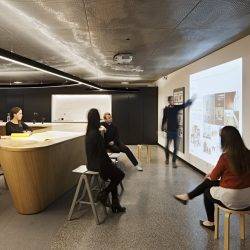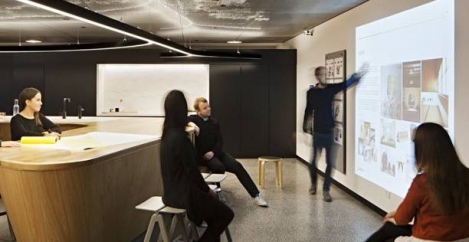October 27, 2017
HR Directors turning their attention to workplace design and experience
 The role of HR Directors is going to change in the future as they will increasingly become “curators” of the office, charged with generating the right atmosphere to inspire millennial workers, according to a study of 100 HR Directors by Unispace. The study claims found that there will be greater HR ownership of the physical workplace in the future as human resources becomes more focused on the employee “experience”. A key to future success will be ensuring workers are “engaged with the workplace” and enable them to collaborate in better ways and become more productive. A recurring theme identified during the interviews was a change to the overall decision-making process around physical space. Previously the remit of property and facilities management, it now includes HR representation as standard practice in large organisations. Bringing HR to the table enables the working environment to embody organisational values and contribute towards achieving strategic “people-led” business objectives, such as better staff retention and productivity.
The role of HR Directors is going to change in the future as they will increasingly become “curators” of the office, charged with generating the right atmosphere to inspire millennial workers, according to a study of 100 HR Directors by Unispace. The study claims found that there will be greater HR ownership of the physical workplace in the future as human resources becomes more focused on the employee “experience”. A key to future success will be ensuring workers are “engaged with the workplace” and enable them to collaborate in better ways and become more productive. A recurring theme identified during the interviews was a change to the overall decision-making process around physical space. Previously the remit of property and facilities management, it now includes HR representation as standard practice in large organisations. Bringing HR to the table enables the working environment to embody organisational values and contribute towards achieving strategic “people-led” business objectives, such as better staff retention and productivity.
Simon Pole, Unispace Global Design Director said: “Our research suggests that there will be greater HR ownership of the physical workspace. This is reflective of a change in perspective from ‘human resources’ to responsibility for the employee life cycle and experience, and a growing sentiment that employees are internal ‘customers’.”
Interviewees stated that a focus on employees is reaching new heights that were previously reserved for customers. One Fortune 500 company HR Director said: “It is really heartening that people are starting to talk about employees as ‘customers’ of the organisation. They actually are; we refer to them as the first and most important customers.”
The growing importance of employee experience was raised by one interviewee: “I think more and more HRs are looking at the general experience of work. So, our intention of inspiring this debate absolutely feeds into taking a more active interest in how the buildings are set out, how people work together, how they meet, how they engage. Does the building help or hinder that?”
The study asked participants if they foresee greater HR ownership of the physical workspace. Globally, 80% said yes. The regional responses were varied, with Australia the strongest response (86%), followed closely by New Zealand (85%), then the US (73%) and Europe (67%).
Interviews with HR directors at leading international organisations such as American Express, Juniper Networks, DLA Piper and Dexus shows that culture, employee engagement and sharing knowledge are all substantially affected by a change of work environment. While wellness, talent attraction and retention are less affected, there is still a significant perceived correlation between these areas and changes in physical space.
“We have identified a clear consensus that workplace culture, employee engagement and knowledge sharing are all substantially affected by a change of work environment,” explained Pole. “Similarly, while wellness, talent attraction and talent retention are less affected, there is still a significant perceived correlation with a change in physical space. These findings highlight the immense opportunities organisations have to realise strategic HR objectives if they engage with their people during any workplace change.”
The key physical factors that can influence staff performance, included having the right spaces to do the ‘job properly’ including providing adequate meeting areas, according to most respondees. This was followed by technology / connectivity and access to colleagues, both in and out of the office.
With Millennials now accounting for a majority of many company generational makeups, the research asked HR leaders if they are seeing different work style preferences across the generations in their workforce. The traditional notion of the ‘office’ was an area that many participants viewed as relating to generational preferences. One HR leader stated, “Employees with more seniority would still prefer working in enclosed offices, especially to meet their team members. Seniors still prefer an enclosed space for confidentiality reasons and for management style. Having to book a meeting room for this purpose is not seen as an improvement yet.”
The idea of cross-generational collaboration was raised in two significant ways: technology as a potential separator between the generations, and ‘reverse mentoring’ to share knowledge with younger employees. “We have a number [of employees] over coming years who are going to face retirement, so part of our challenge is ensuring we don’t lose that expertise, experience and passion that these guys emulate every day [with customers],” explained one participant.
Co-location of teams was a recurring theme, as was moving away from offices into more open, transparent environments. Less offices means that more leaders are visible and are more likely to have those critical conversations with the people that work for them.
Note from Mark Eltringham: We are aware that the BIFM has also published a guidance note on workplace experience this week but you either have to be a member or pay for it here. If BIFM wants to be part of the new era of workplace management, they don’t always show signs of it.













